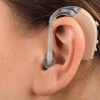Pandemic poses unique challenges for people who are Deafblind

In a global scenario where social interaction, even touching between persons should be avoided, deafblind persons interaction faces many challenges.
Different international organization and media outlets have brought to attention the dire situation for people with disabilities in lockdown situations, and barriers for continuing with daily life activities.
Deafblind persons relay on physical interaction with others to communicate; in case you’re not aware, some technics involve touching hands, manipulating palms and fingers. Using gloves might not be an option, as they are not used to them during normal situations, additional training may be needed for them to change their sense of touch, if that’s even possible.
Therefore, transmitting basic information about the pandemic, and especially hygiene information for them to be aware of, requires especial measures.
It’s necessary an extra precaution approach to infection control, along with limiting interactions if possible, and sanitizing between interactions with different individuals who are deafblind. Interpreters also need to take extreme sanitizing measures before and after interacting with them. This health emergency calls for the development of innovative technological solutions for communication with deafblind persons, besides relaying on touch-based technics.
As with other persons with disabilities, the information they need should also be related to comforting them, lessening their anxiety, and trying to instill a sense of normalcy. General recommendation from official sources that also apply to deafblind individuals are:
- Establish disability inclusive health policies and employ them in all COVID-19 response efforts.
- Provide, or extend, social protection measures to persons with disabilities and their families.
- Guarantee and enhance access to health services for persons with disabilities and their carers, including access to personal protective equipment and hygiene products.
- Ensure all communications about COVID-19 are accessible, understandable and in plain language. Communications and public service announcements must also be actionable by all.
- Collect disability disaggregated data throughout the COVID-19 response and make non-identifiable information on disability and COVID-19 publicly available.
- Work with, and resource the participation of, persons with disabilities and their representative organisations to ensure disability inclusion through the COVID-19 response.







